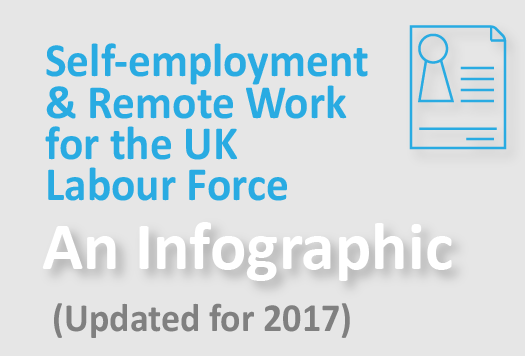Running any business is time consuming and from here in London, running a business can be extremely expensive. You may need space to work, store your files, computers and any other necessary equipment that ensures the day-to-day running of your business and for that you will require a virtual office.
Skip forwards to:
I currently have a friend who is in the beginning stages or starting his own business. Like many of us, he has a dream to be his own boss and to run his project with efficiency and minor costs. We would all like to run our business with a few costs as possible but bootstrapping a business isn’t always an option.
There are usually costs involved with most businesses, however you may already be in a position where you have managed to negate some of the costs of starting up. Perhaps you were given essential equipment by a friend or have decided to make your hobby your profession. The reality though, is at some point you will require the paperwork of a business and the use of additional services to help you manage your accounts, mail or phone calls. Administration services can be expensive and more often than not, you will need to employ someone to help take calls and to deal with your clients and customers by the day-to-day.
Most of us, no matter how hard we work, will need some help from an extra pair of hands but you need not employ someone straight away. More often than not you can outsource your administrative tasks to a professional business service company.
Most professional business services come in the form of a virtual office. A virtual office can come in many shapes and sizes but usually acts as an address service. A fee is paid to the provider and in return they will sign for your mail, file it and often forward the mail to your desired address. A virtual office differs from a serviced office or executive offices in that it represents a non-physical address and cannot be used by a client or customer as a traditional office space in which to work.
The following are some services you may expect to outsource as a self starter who is working from home.
1. Mail Handling & Letters
A virtual office will usually include mail-handling. This means letters and parcels will be signed for. If you are out of your own office, whether that’s at home or a rented office, a virtual office provider can be there when you aren’t. It’s their job to sign for parcels and to deal with the postman. Letter sized mail usually makes up the majority of sent mail handled by postal services. Documents are normally printed on A4 paper (210x297mm) or a letter size (215x280mm). Although electronic mail is most popular for written correspondence and is usually the most efficient method, you may still receive mail concerning your business in the form of bills and new credit/debit cards as well as letters from your bank. Usually most written content that contains sensitive information is sent via physical mail to lessen the chances of that sensitive information being intercepted. In the United States of America it is considered a strict violation of the law for anyone other than the named addressee and government staff to open a mail not sent directly to them. However, in the UK and other countries you may request that an individual access the contents of an important letter on your behalf. A service that most virtual offices providers will happily oblige by.
Our top tip: When using your national post service to send mail (Royal Mail UK), it’s best to send your mail as registered mail. This allows the location and correct address of the mail to be tracked by you and by the mail provider. It’s usually more expensive but is generally recommended when sending and receiving important letters and parcels. Registered or recorded mail requires that an individual signs for the item upon receiving it. This method of sending is protected by The Recorded Delivery Services Act 1962.
2. Registered Addresses
Having someone to sign for your letters and handle them safely may prove beneficial to the daily running of your business but first you will require a registered address. Again, a registered address can come in different forms. Usually a provider will allow you to open two main account types.
A personal mailing address to be used by an individual for non-business purposes. This means letters must be directed to you as an individual, that’s by your own name. The address can not be used on websites, business cards or on any other form where it is showing as an address associated with your own business.
If you require the address for your business practices, usually an additional cost will ensue, but as this is the most popular use for a virtual address you will find that most services are setup to handle business mail. Additionally an individual can use a business account to receive mail addressed to their business, this also allow an individual to use the address of their virtual office as there own, for placement on business cards and daily correspondence.
The specific requirements of your business will vary but some may require that your business is associated with a prestigious address. To find out more about registered office addresses click here.
3. Mail Forwarding
Having an address to receive your correspondence, in the form of letters and parcels is great but you may also require that your mail is then forwarded to your personal address or a custom address that you have provided. A virtual office may include a mail-forwarding service. This means that you can get those important letters and parcels signed for and then sent to you, wherever you may be.
Most postal services have a mail-forwarding service although the cost and any additional forwarding fees will vary from provider to provider. Low Cost Letterbox has some of the most reasonable pricing for these services requirements.
Top Tip: It’s important to note that most providers will have a maximum size for parcels, usually a large parcel is up to 30x30x30cm or 5kg. This means that anything exceeding this size will require an additional fee to be both received and forwarded and may include additional charges
4. Mail-Scanning
Mail-scanning involves physical mail and the process of scanning the item via a scanner, to be consumed and mailed via a new electronic form, usually e-mail or via cloud services. Not all providers will include this type of service so watch out for additional charges from providers who include this service as an add on. Most of us deal with electronic paperwork on a daily basis and it may be that you prefer this type of forwarding over the traditional paper format. If this is the case look for a virtual office that includes this in their package types.
5. Notifications
So you have you virtual office up and running? Whilst your letters and parcels are being received and looked after, it then becomes no use to you if you don’t know what you have received and when. A virtual office provider will usually have a system for notifying you when you receive mail. This may be by text, by e-mail, a phone call or a notification by an app but most providers will be inclined to notify you that your mailbox has taken deliveries. Some clients may also require additional security, in which case a provider may be able to offer you alternative methods of notification.
6. Time to collect
Once you know you have mail you will need access to it. If mail-forwarding isn’t included in your plan you may need access to a nearby depot where your mail is being stored.
Top Tip: Make sure your virtual offices provider has an address close to your home or somewhere that you don’t mind commuting to collect. You will also need to bare in mind that your provider may not be open at early or late hours, beyond normal business hours, so keep an eye our for virtual office providers that have depots open 24 hours or on weekends.
Remote work and the use of virtual offices is on the rise. With an increase in rent and a decline in affordability, the most efficient and manageable system for handling your business administration may be through a virtual office provider. To find out more about our virtual offices, click here.

















